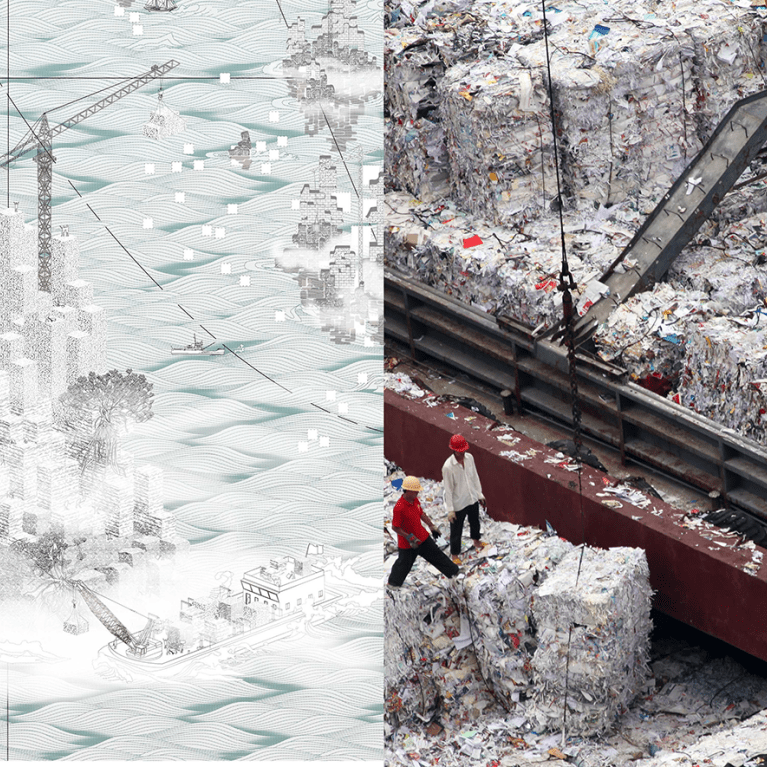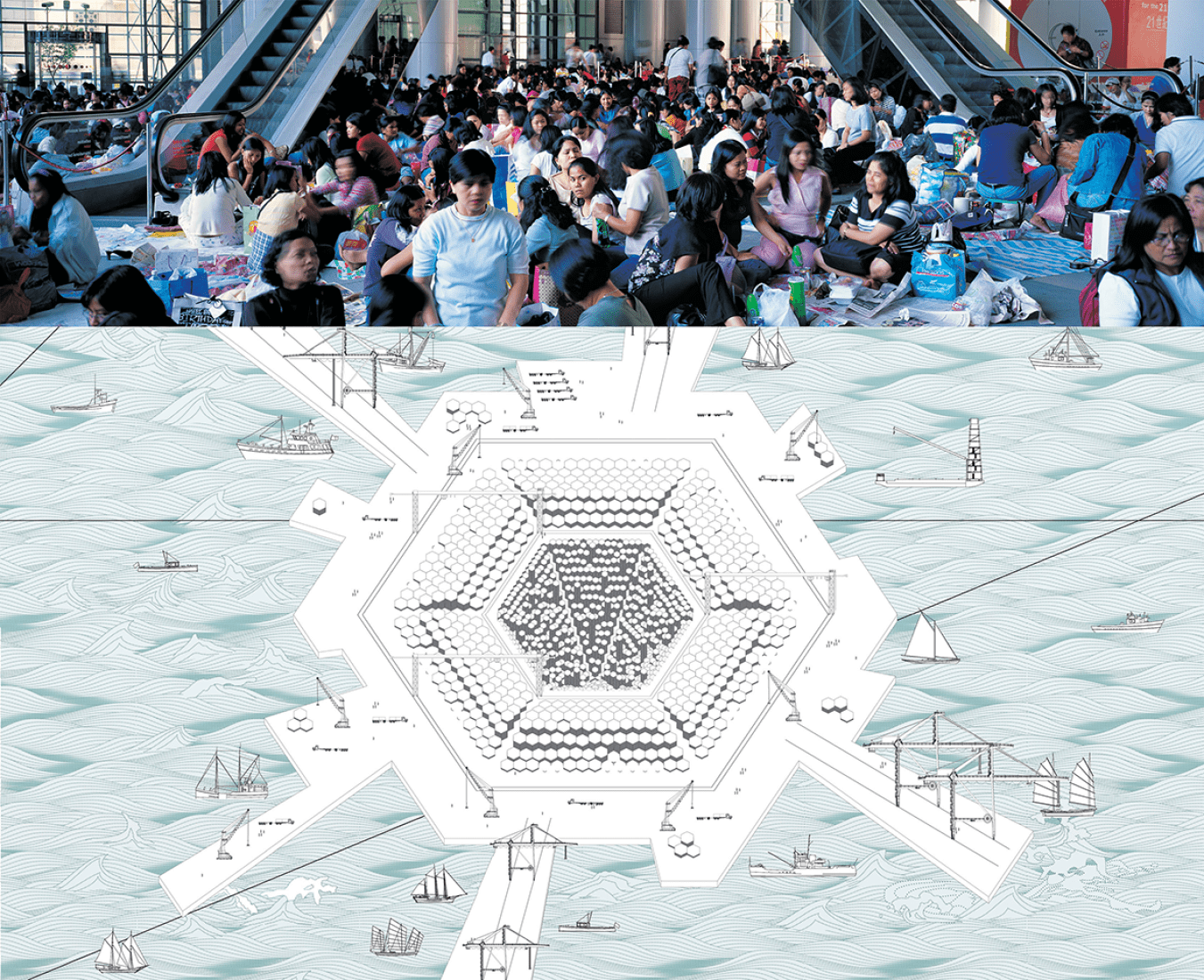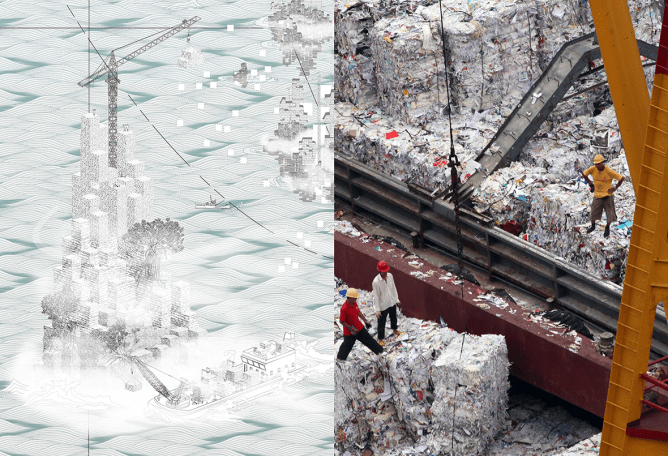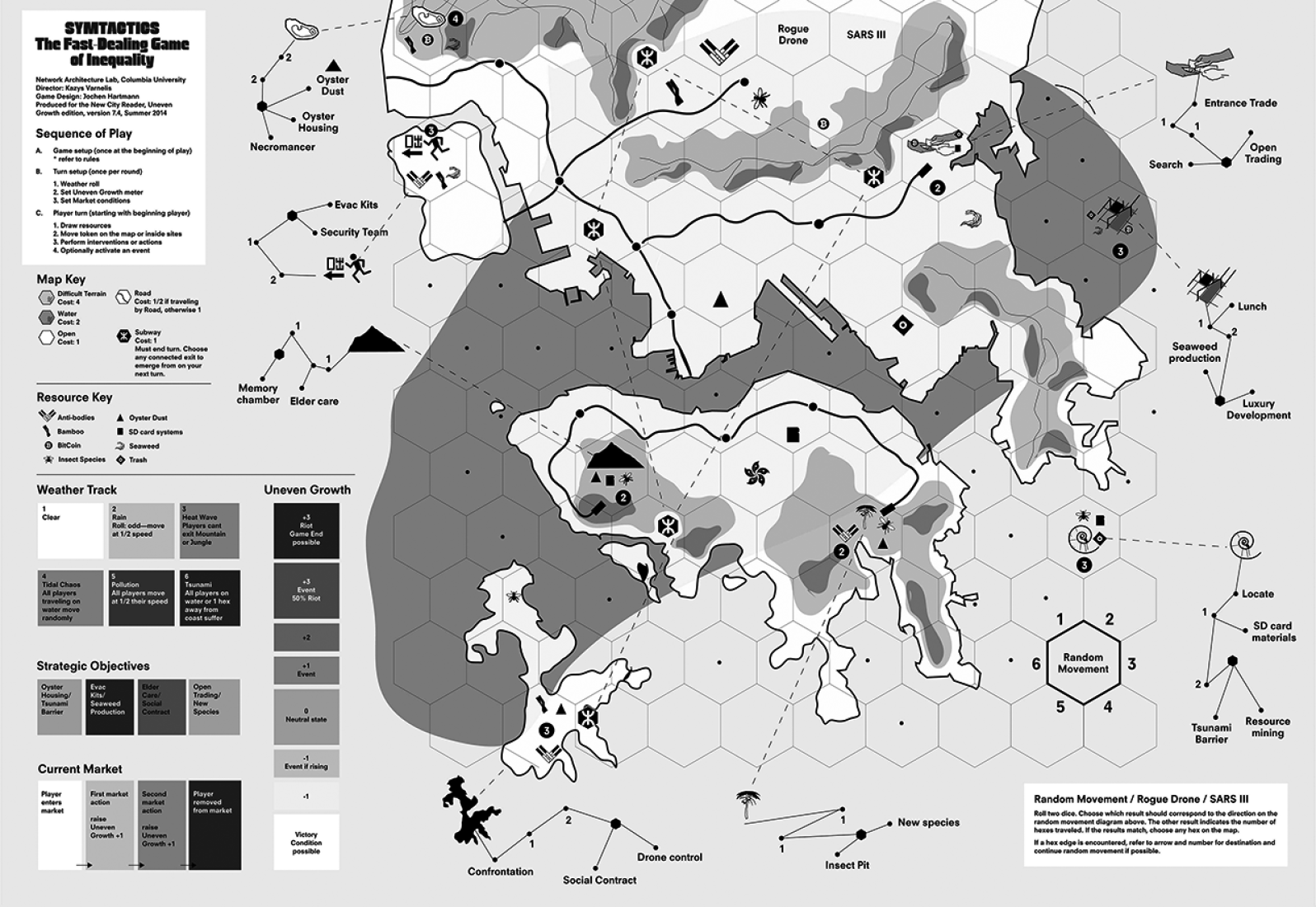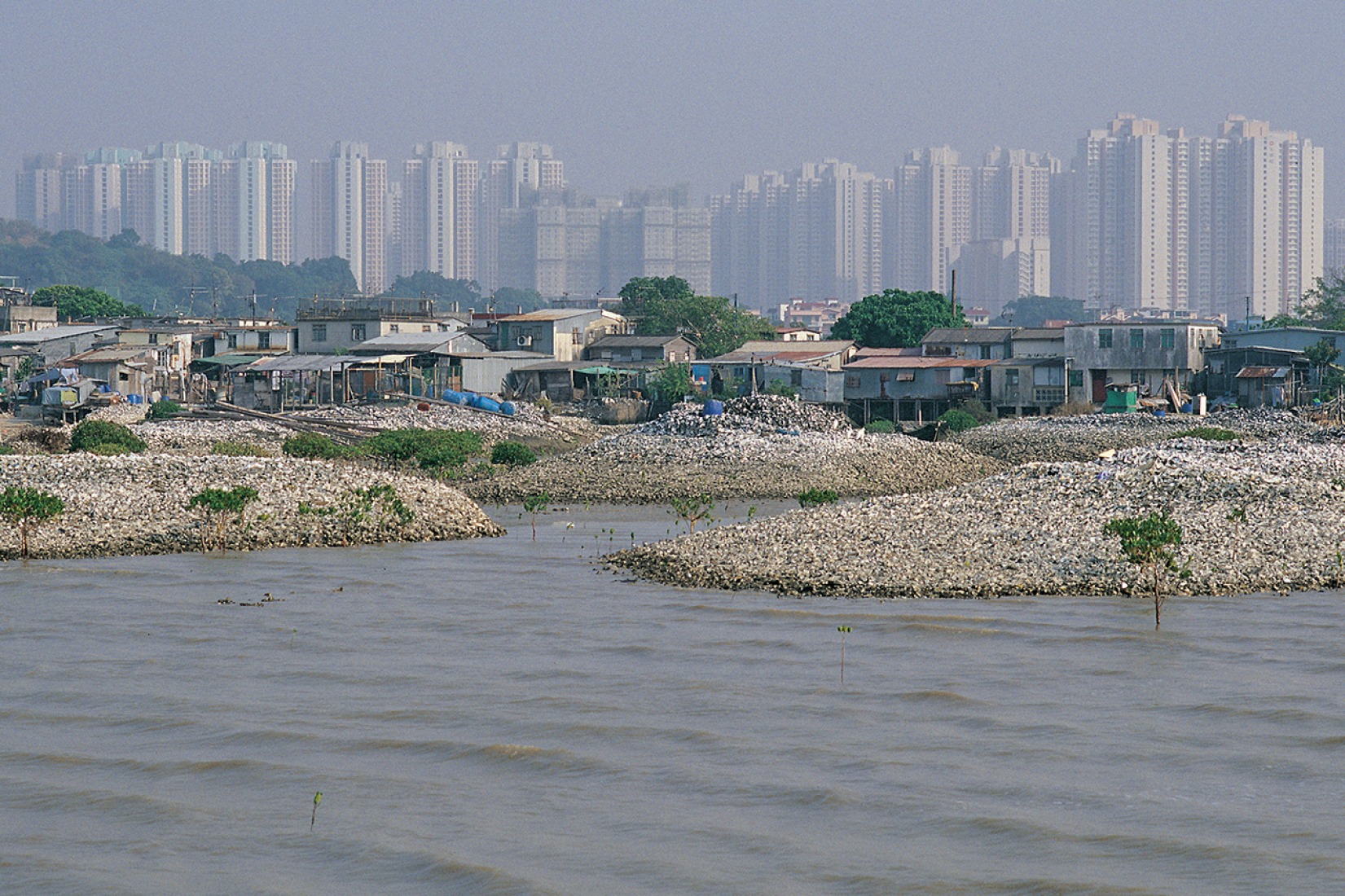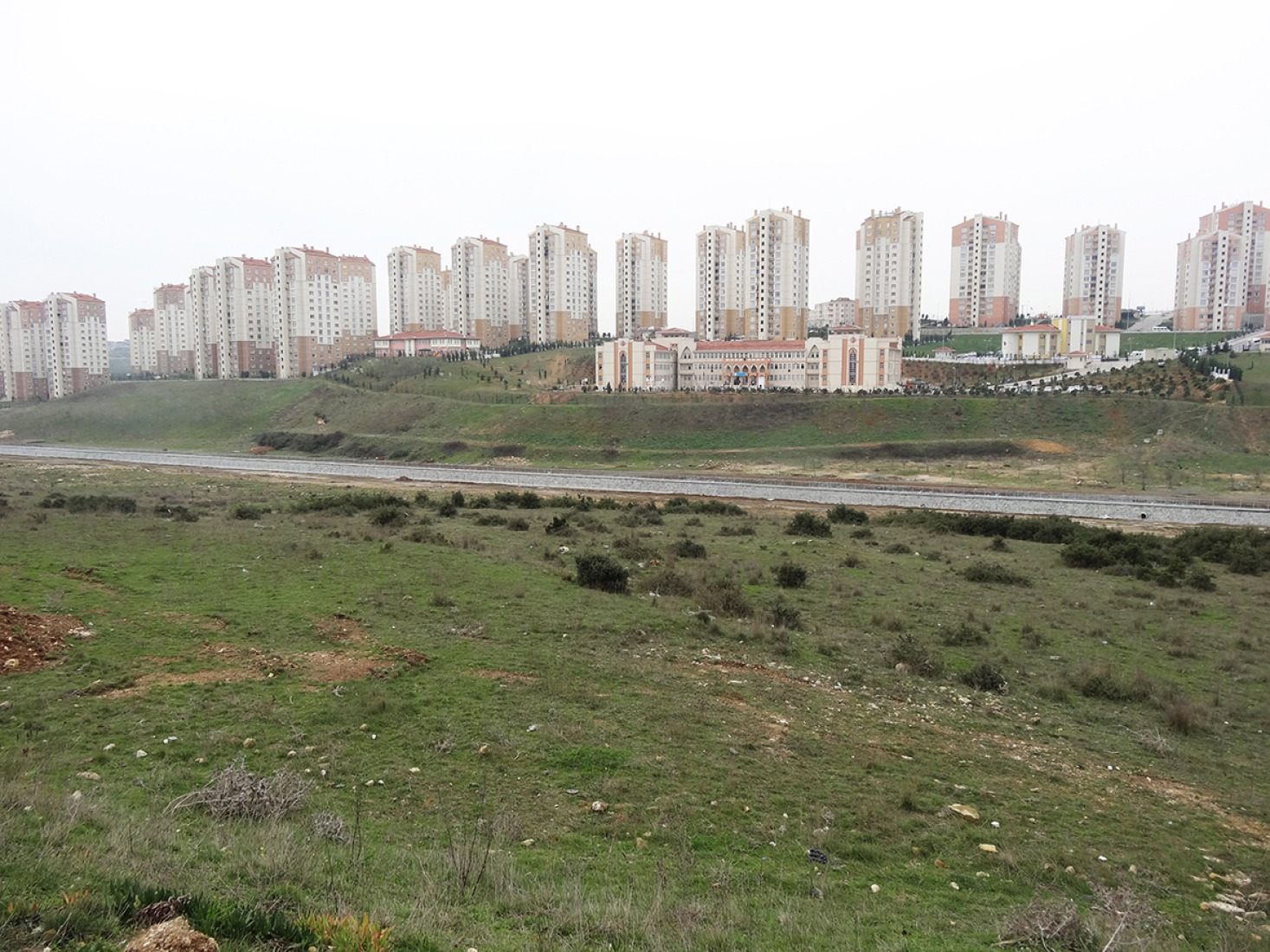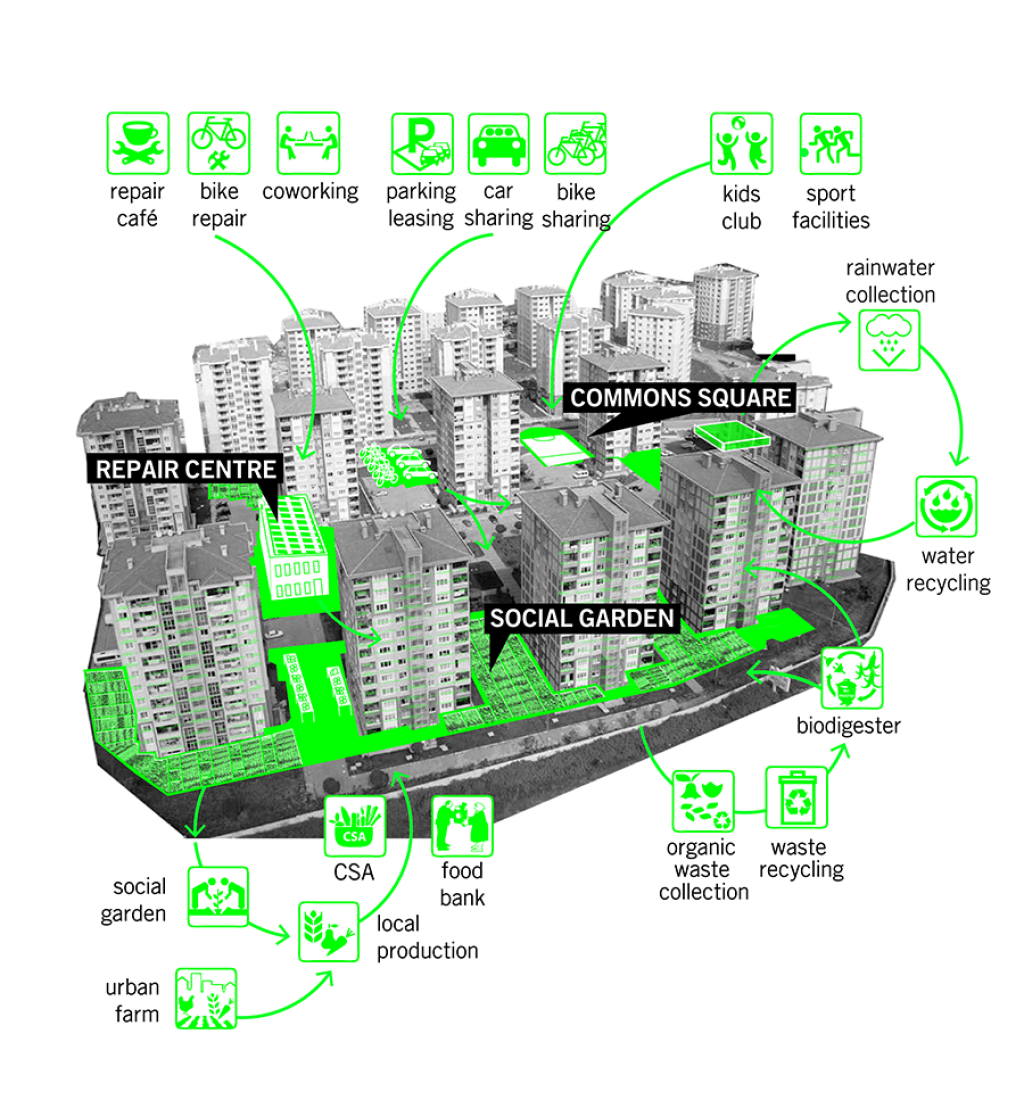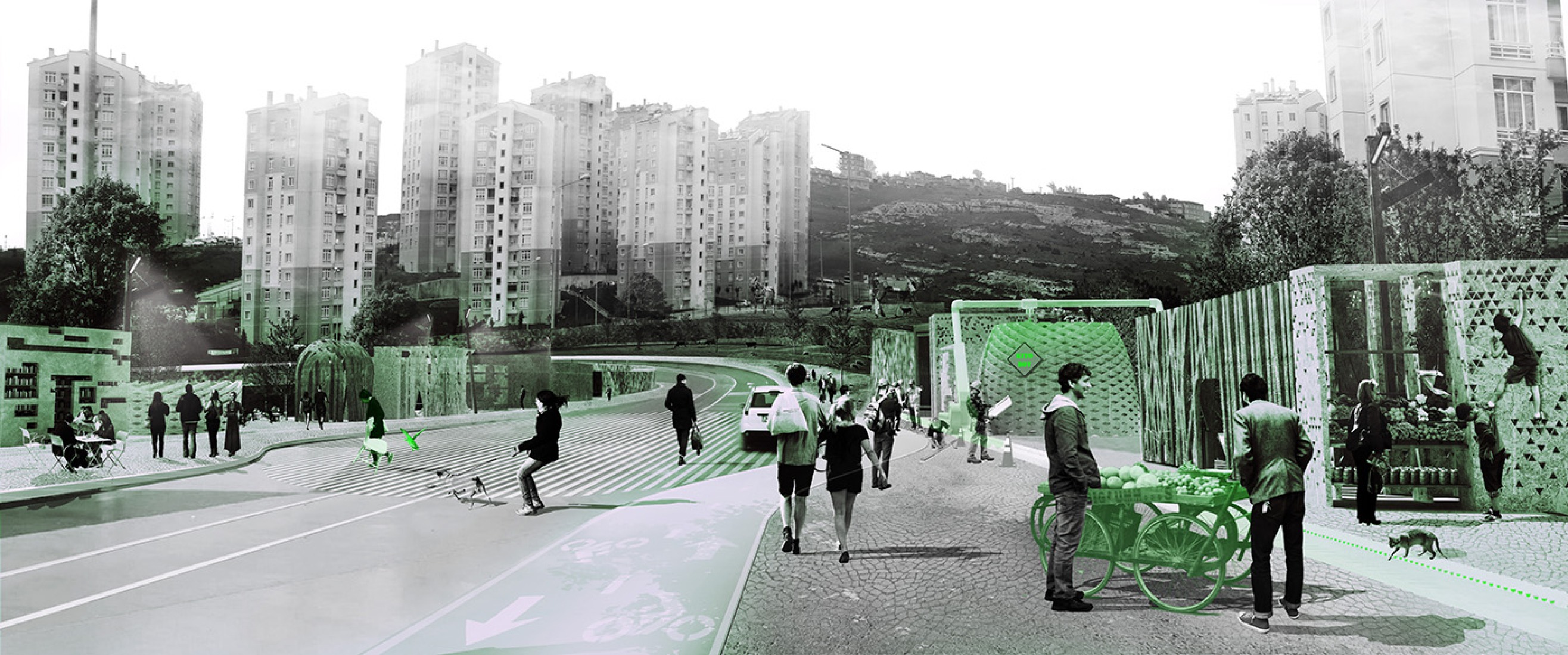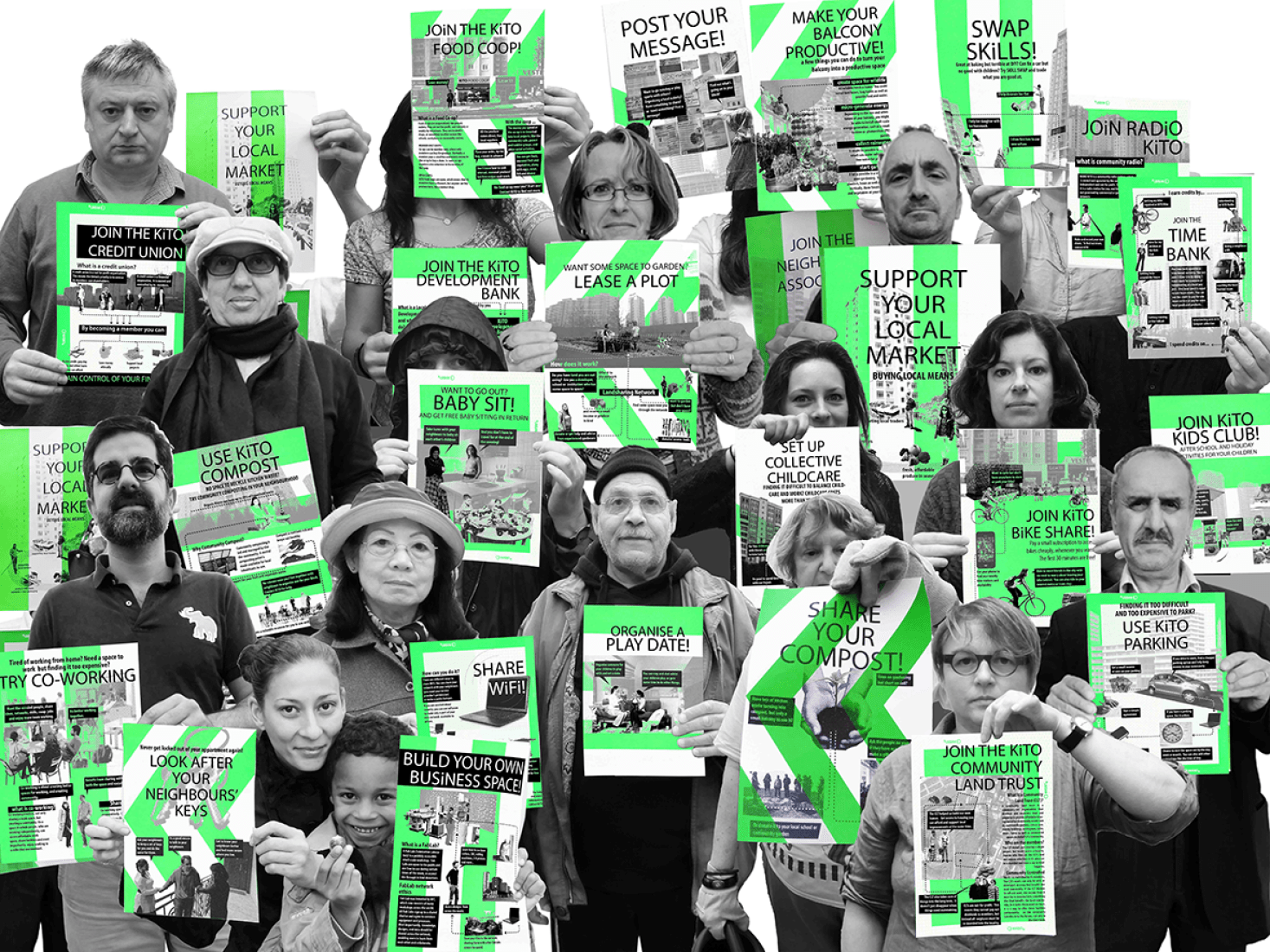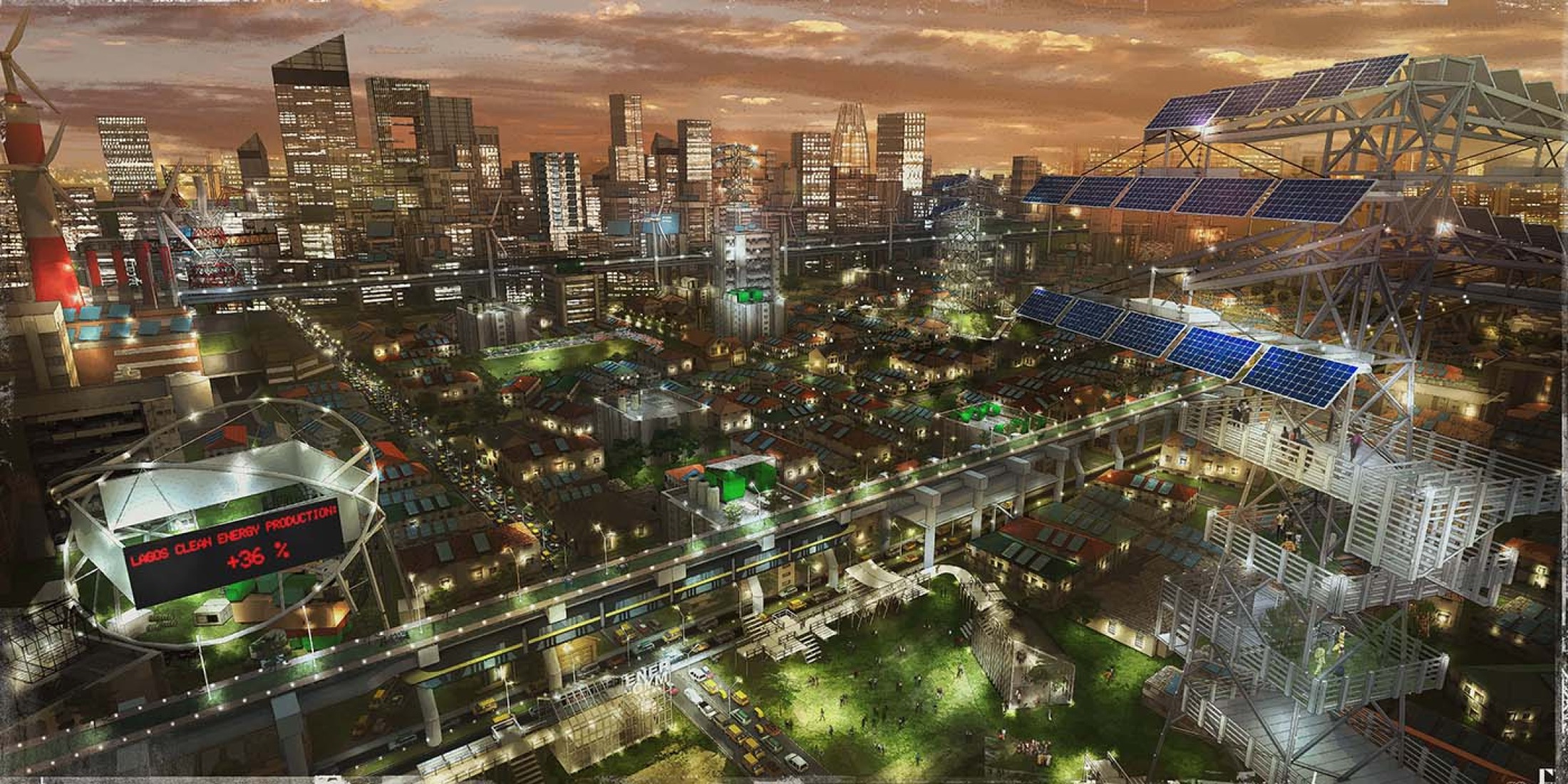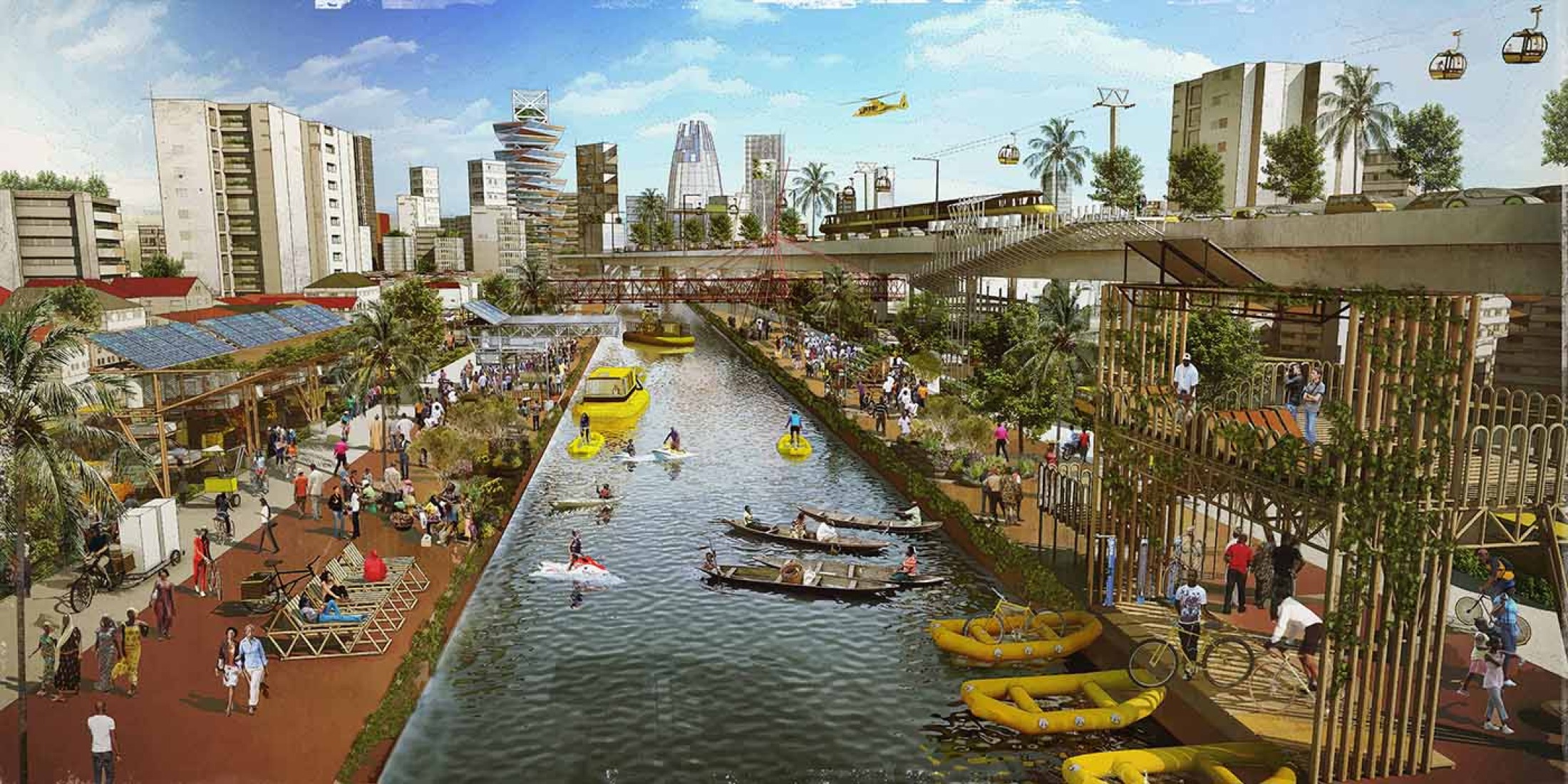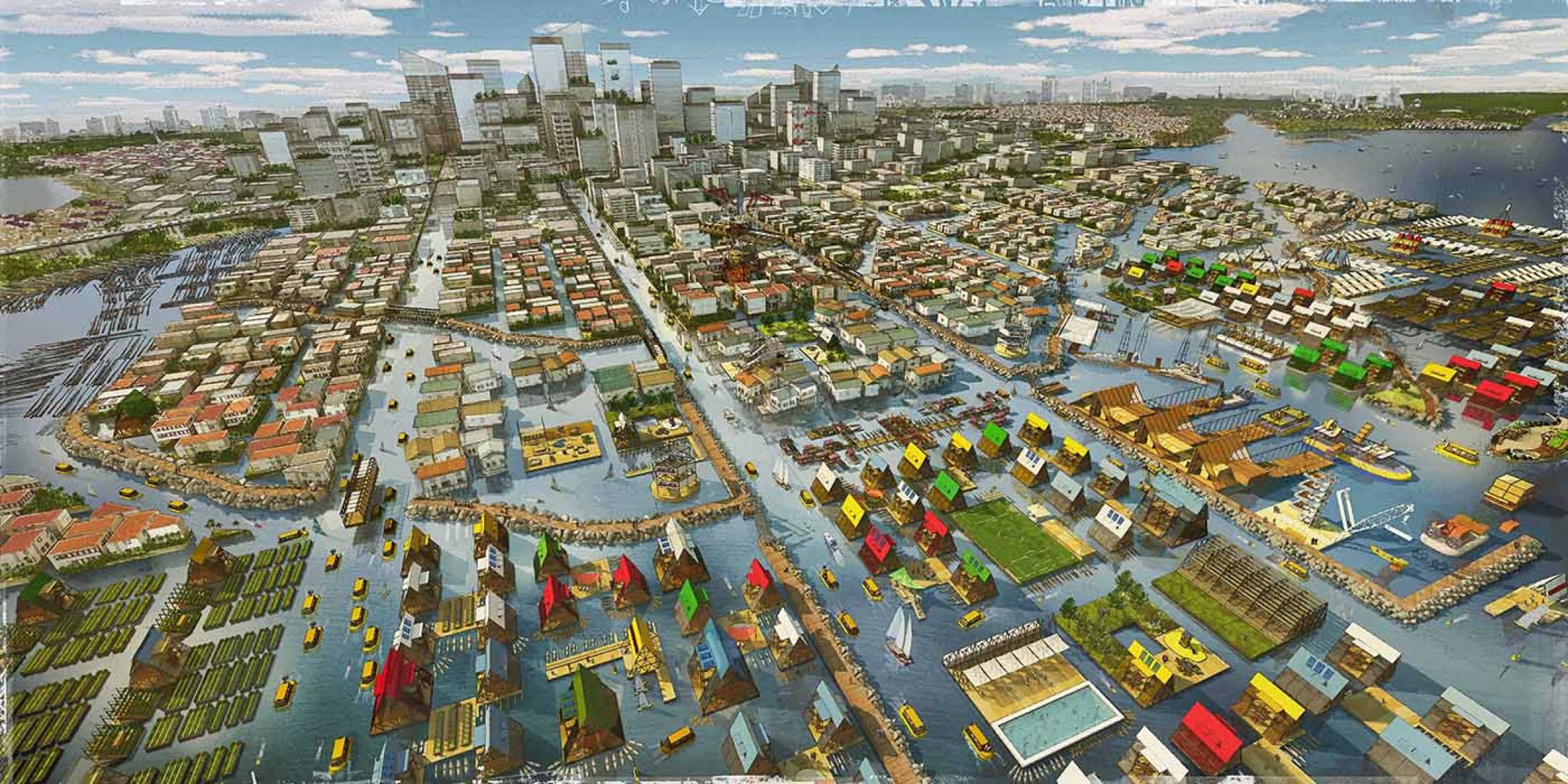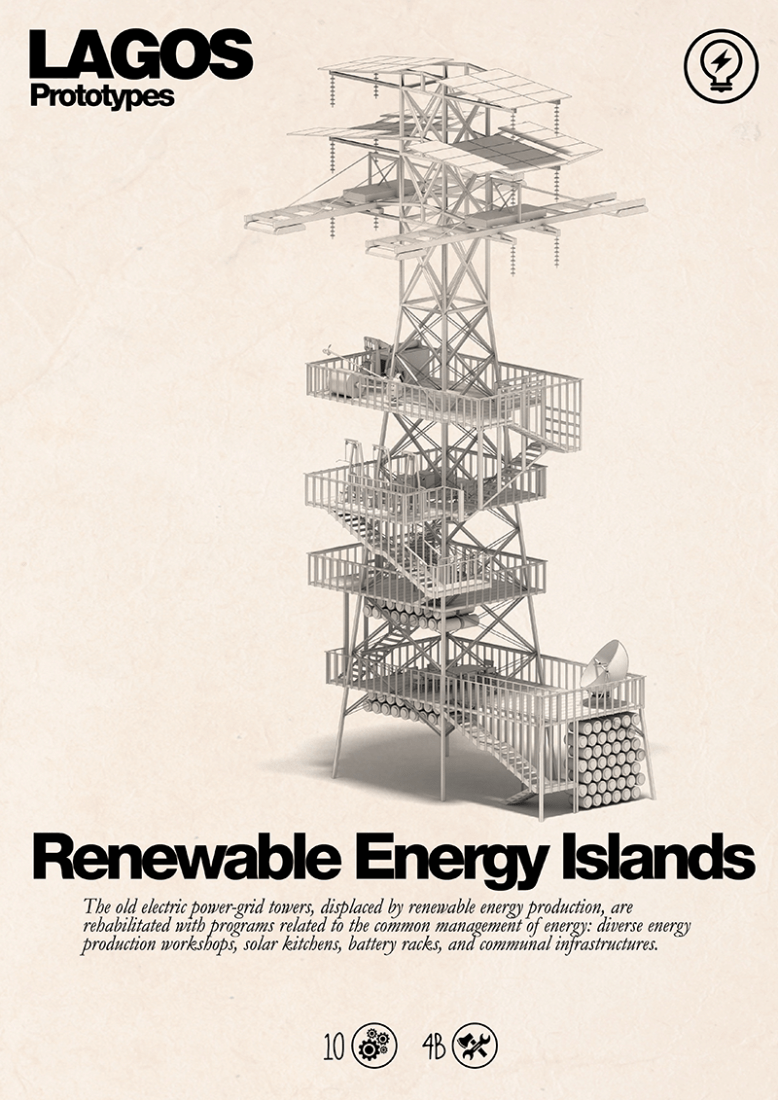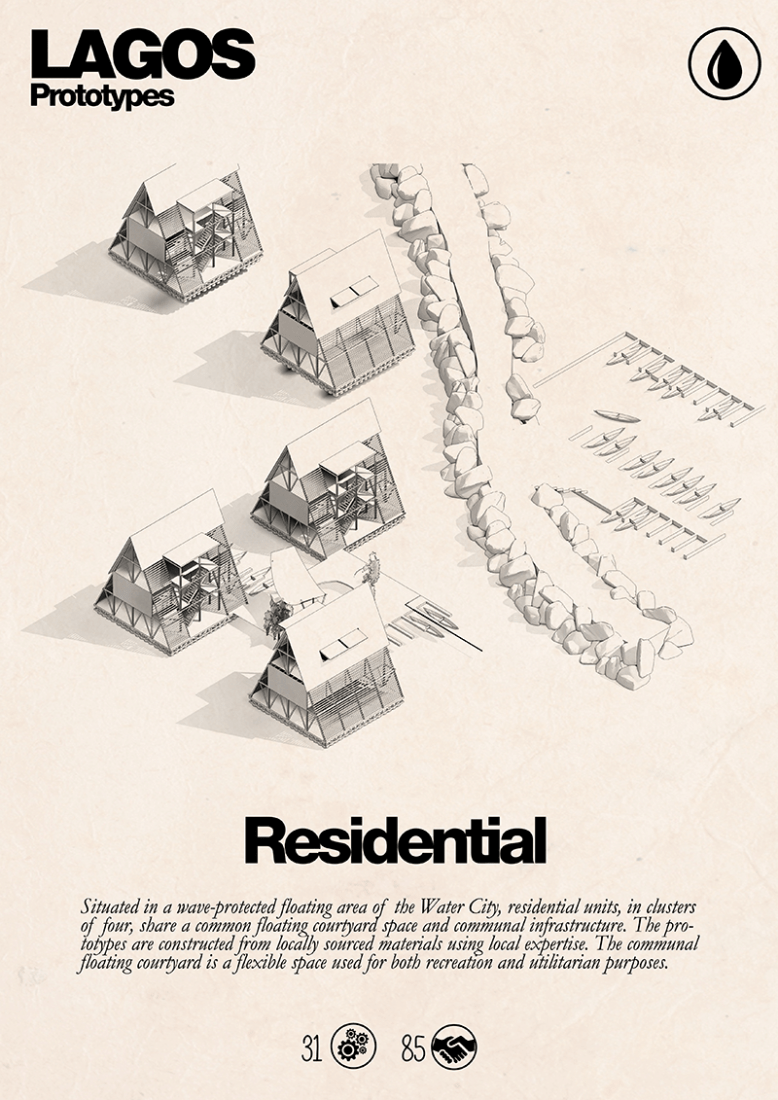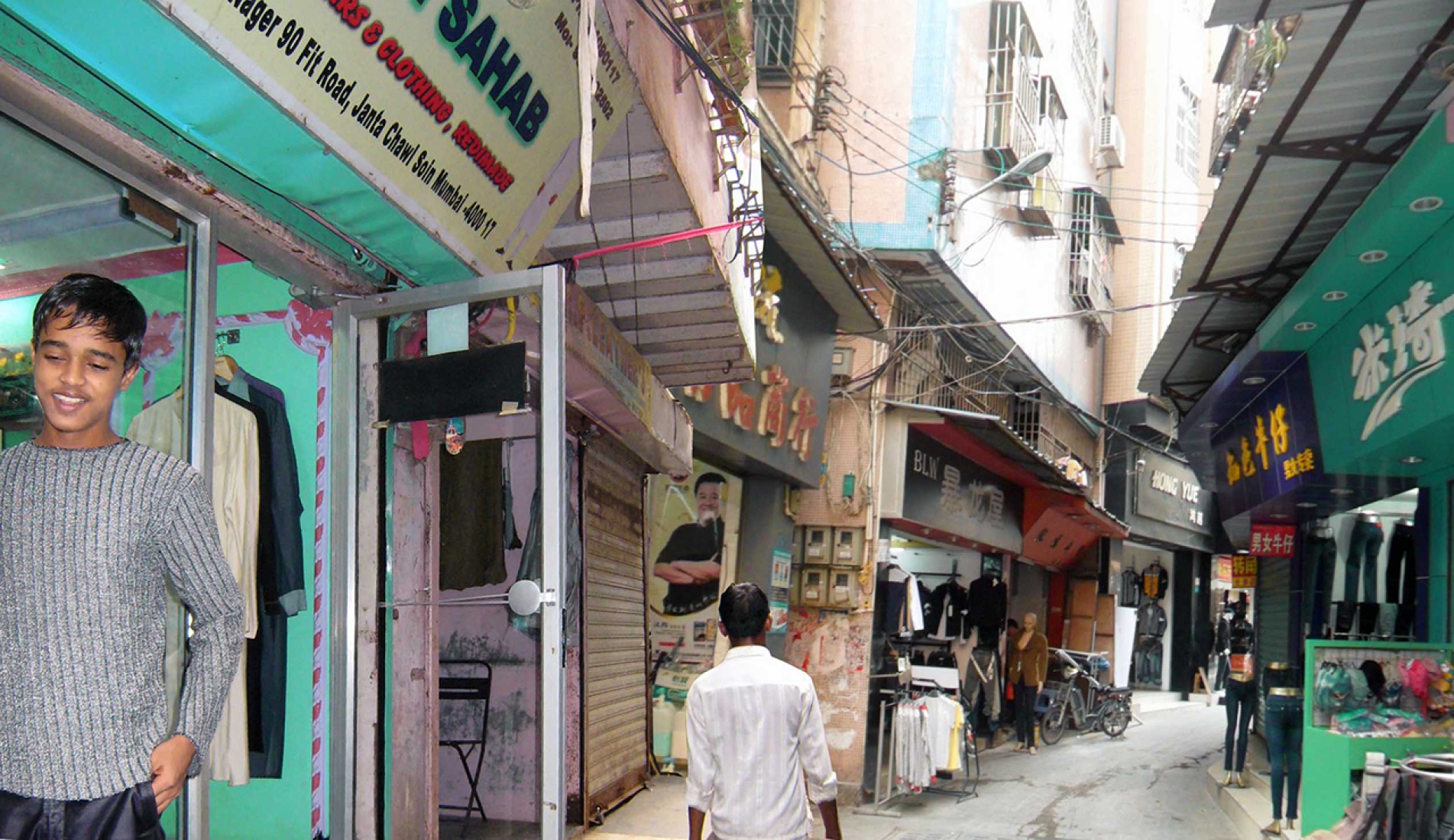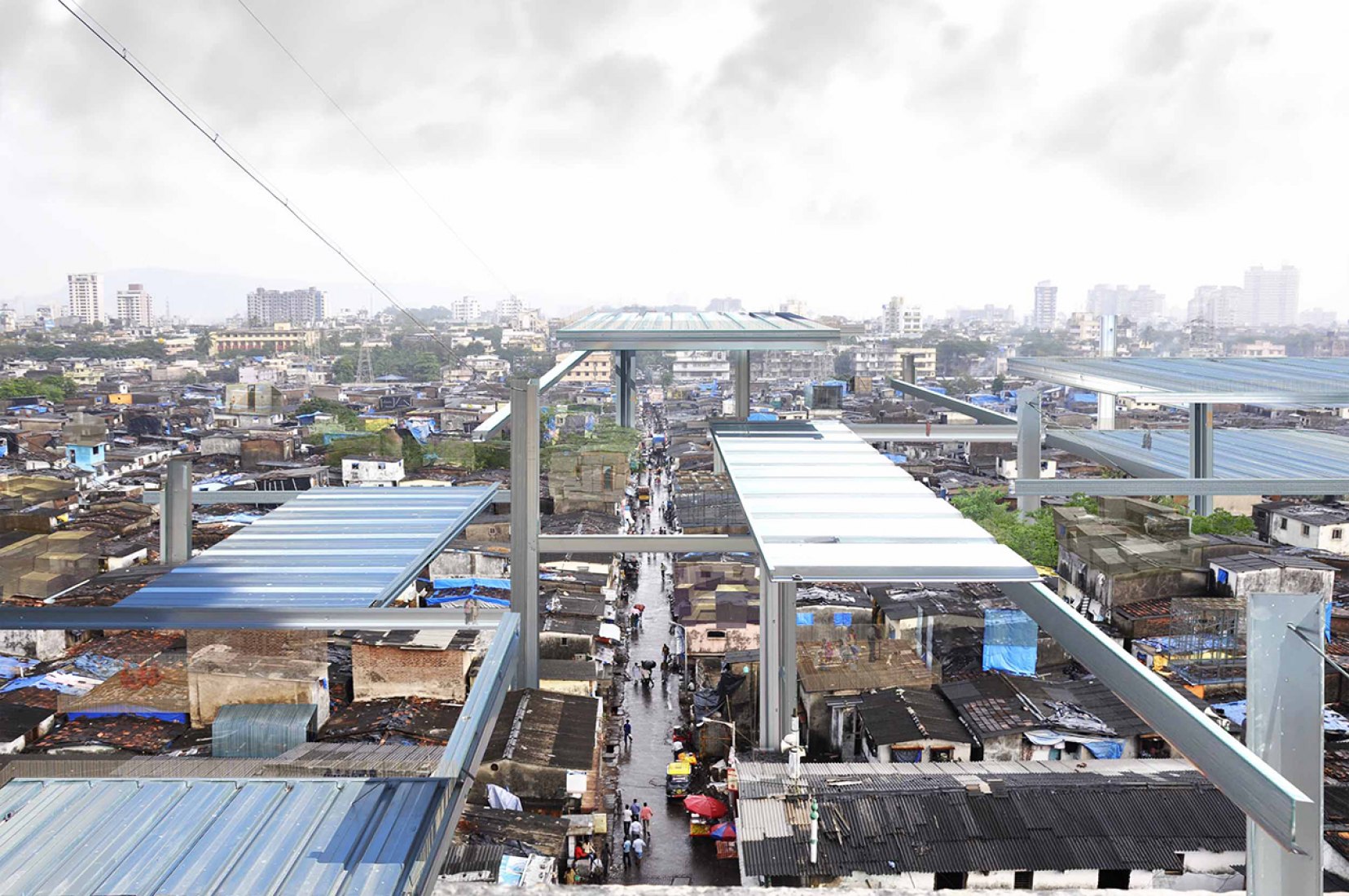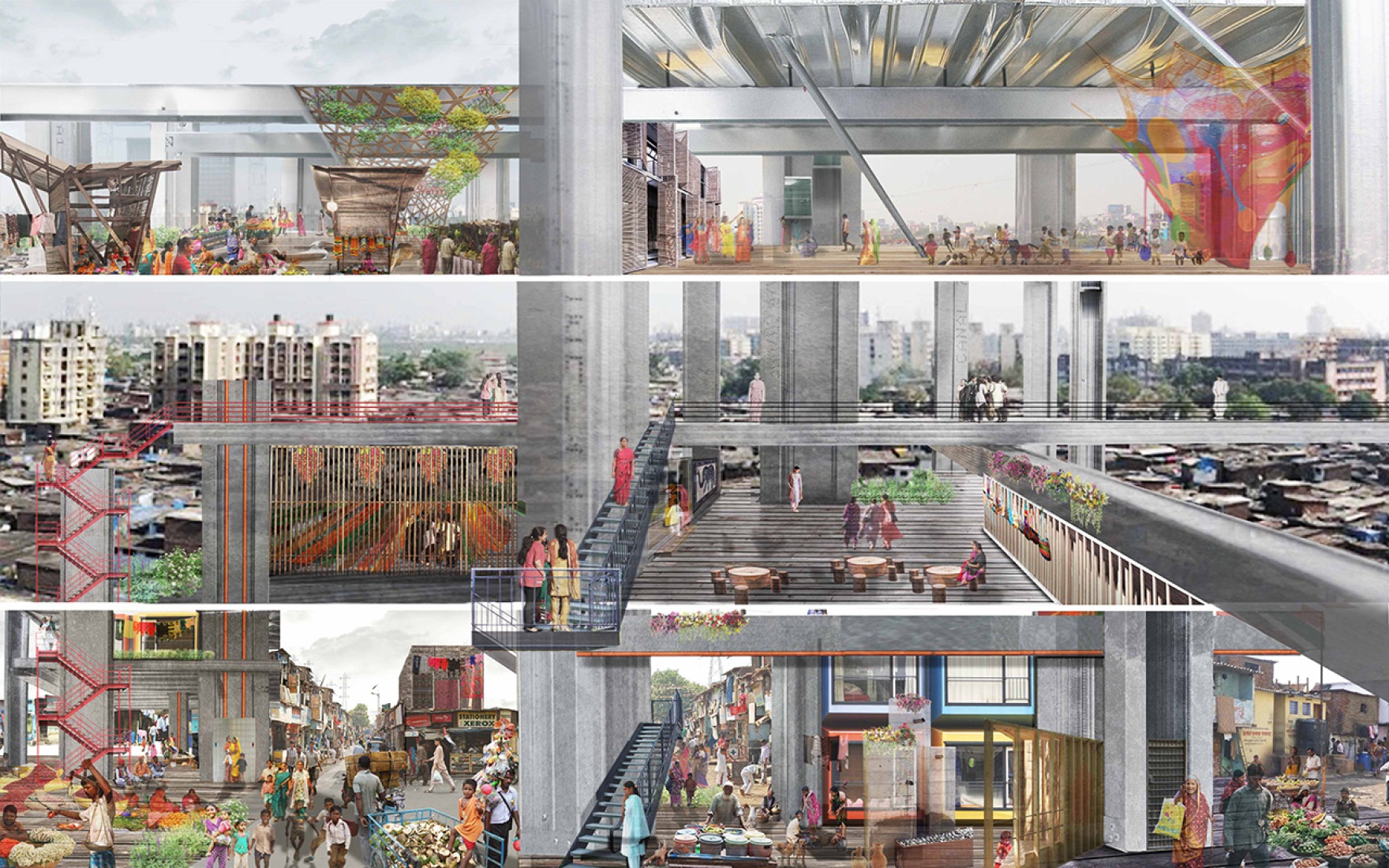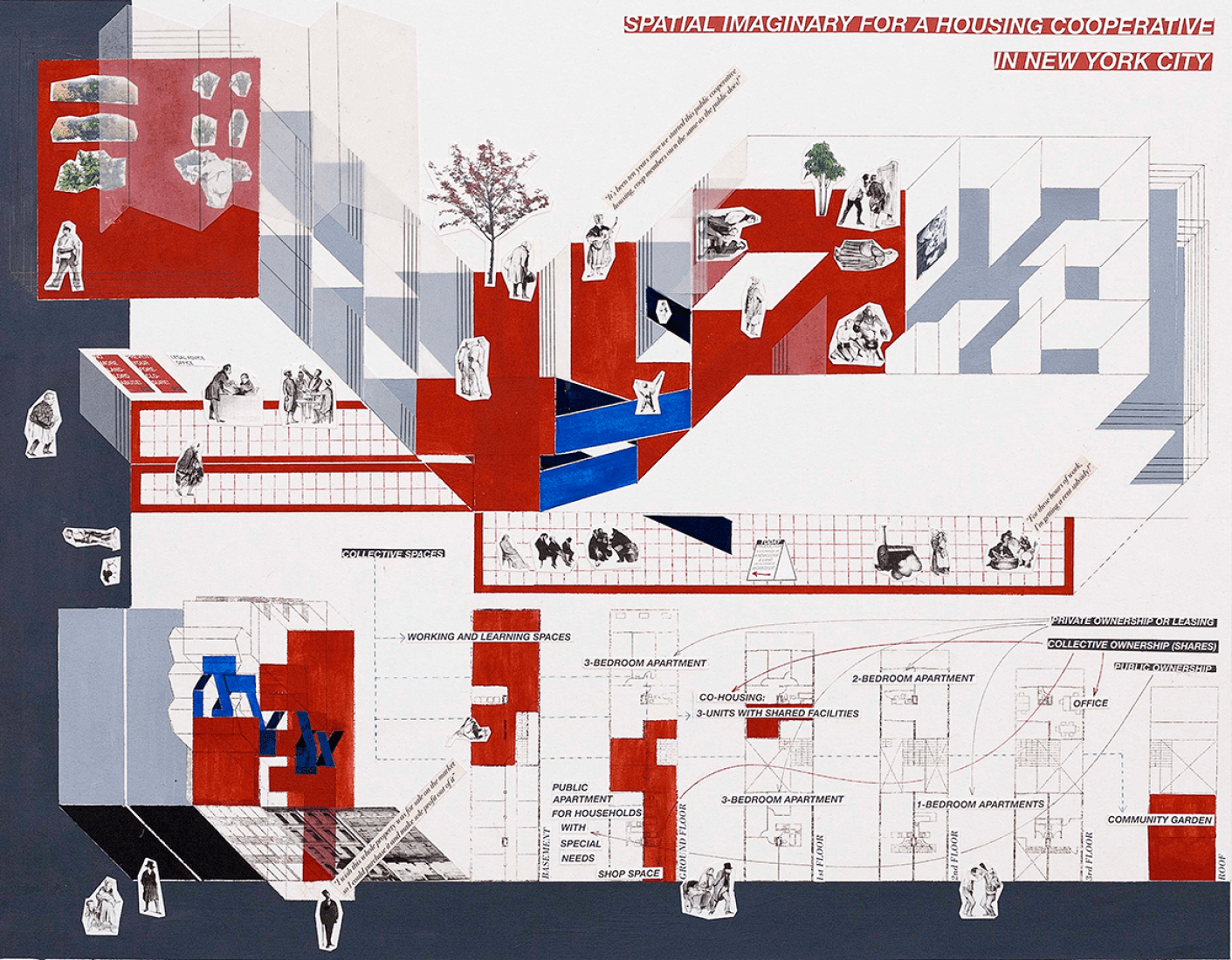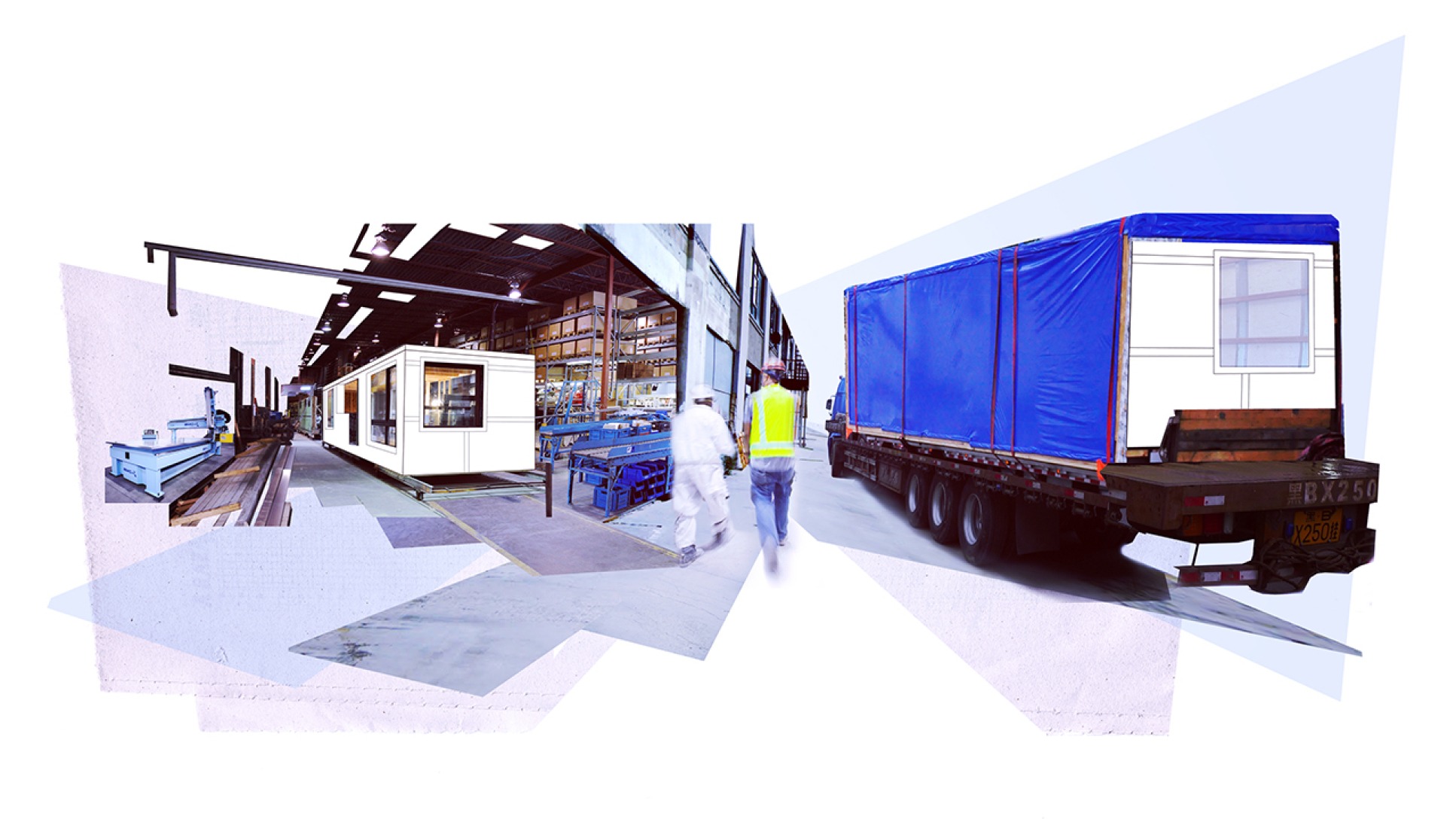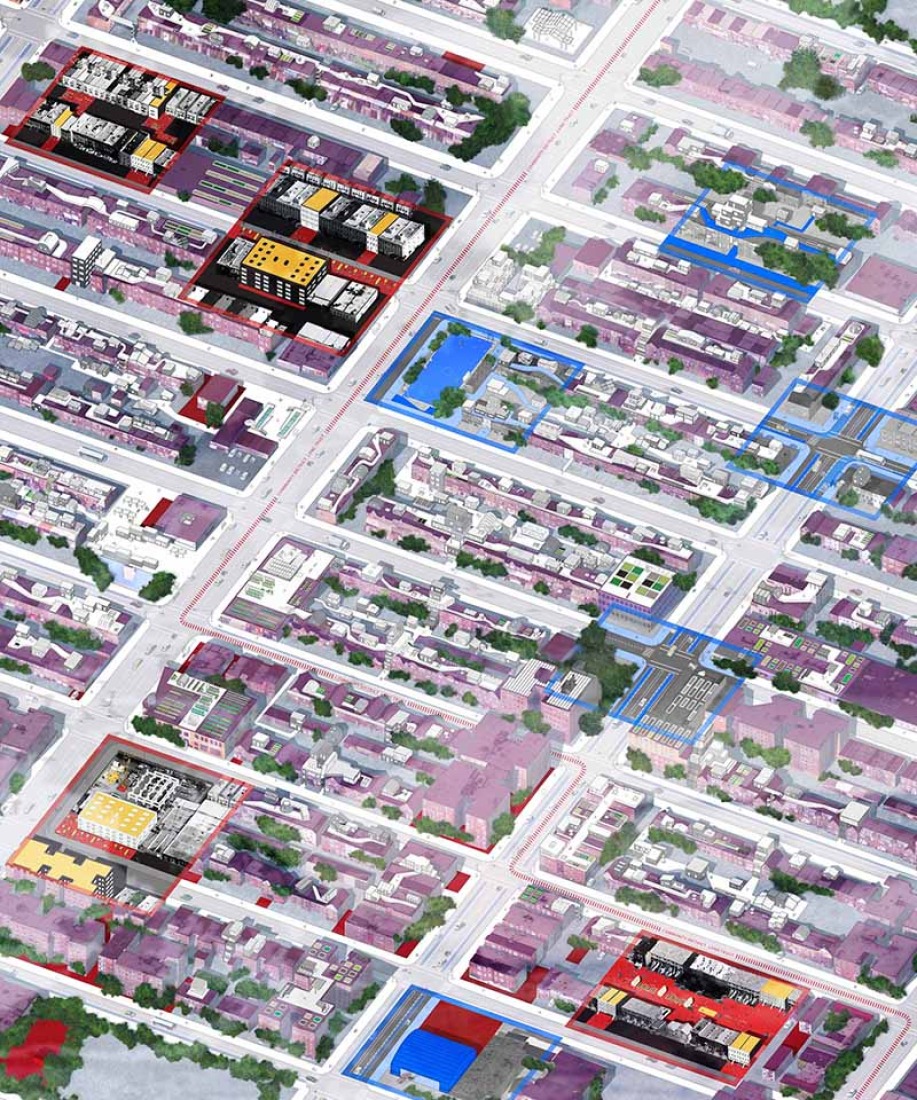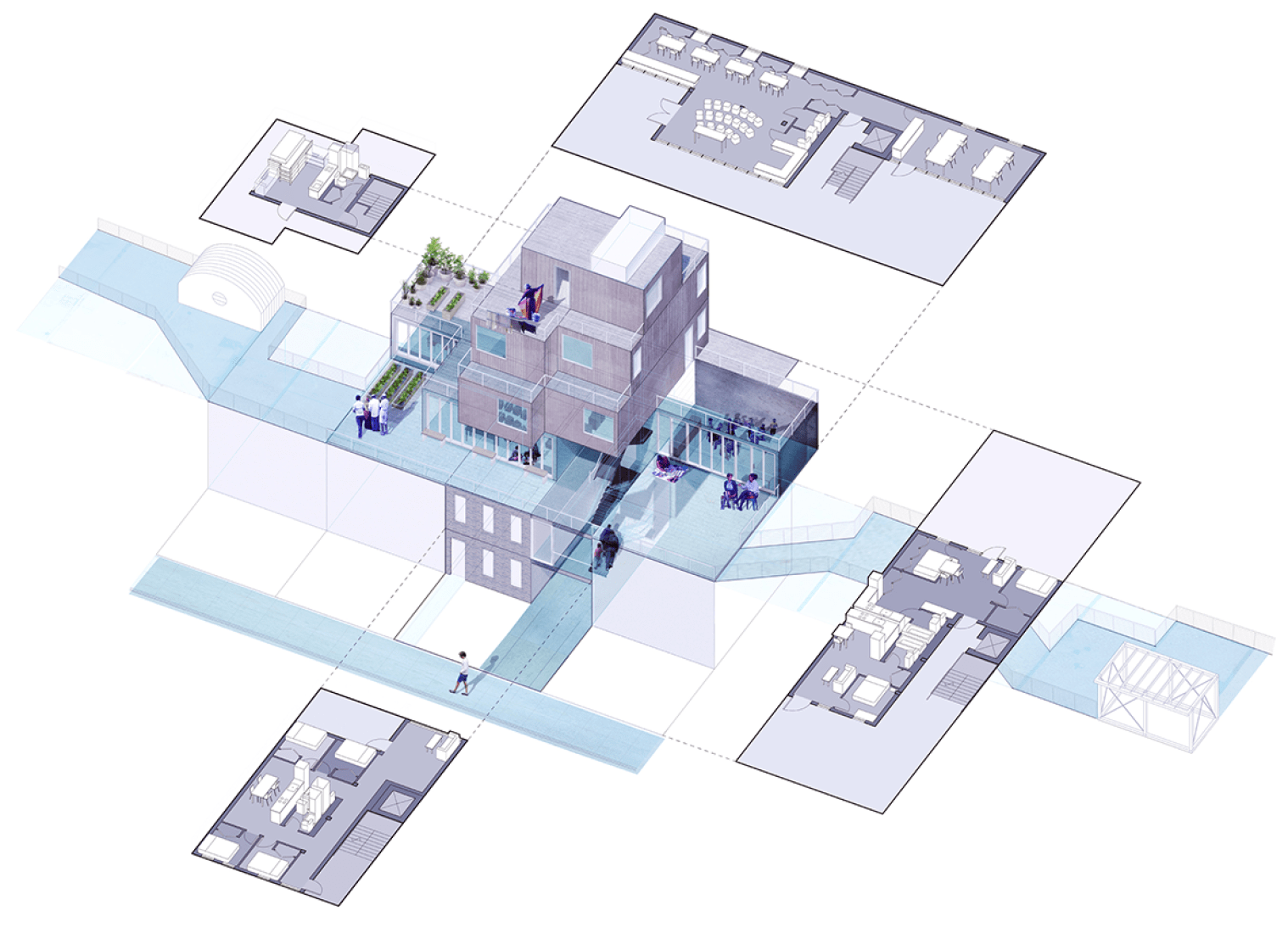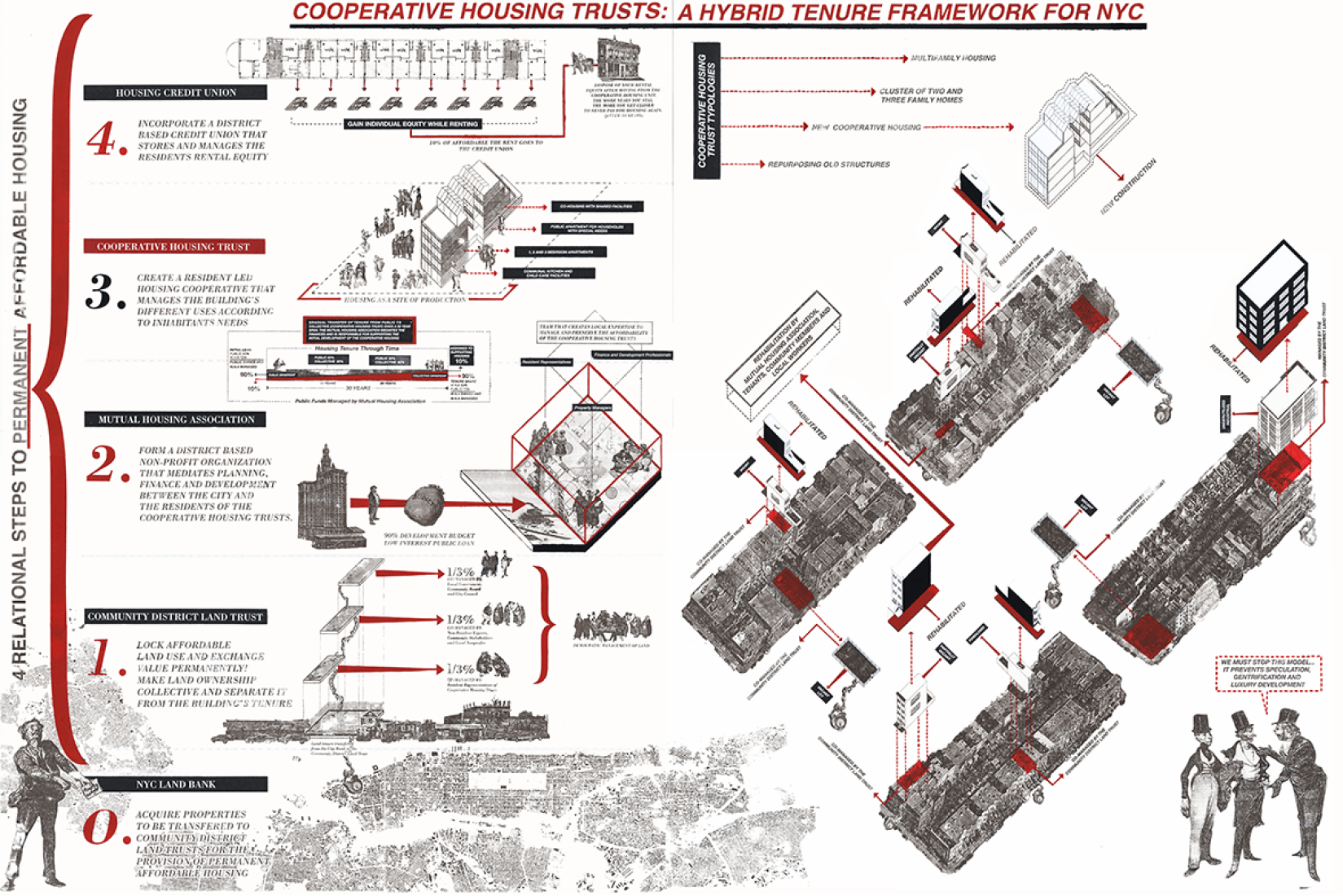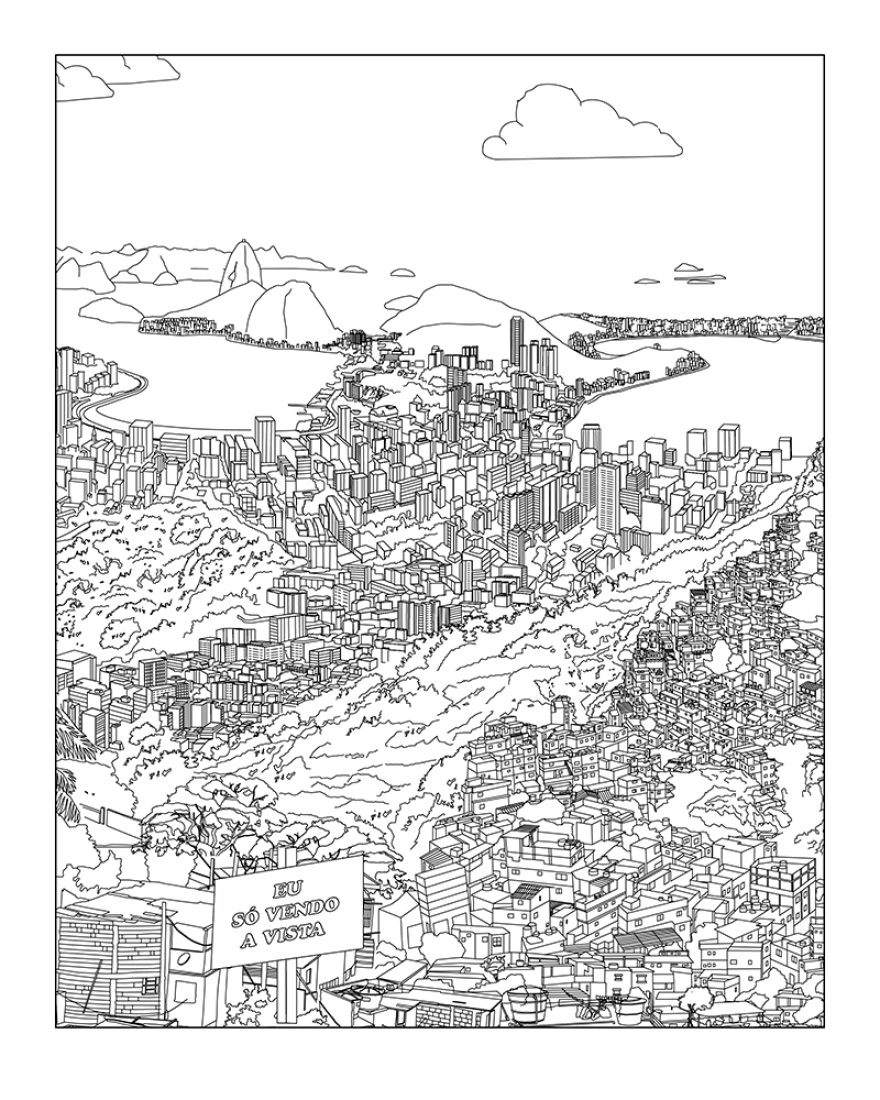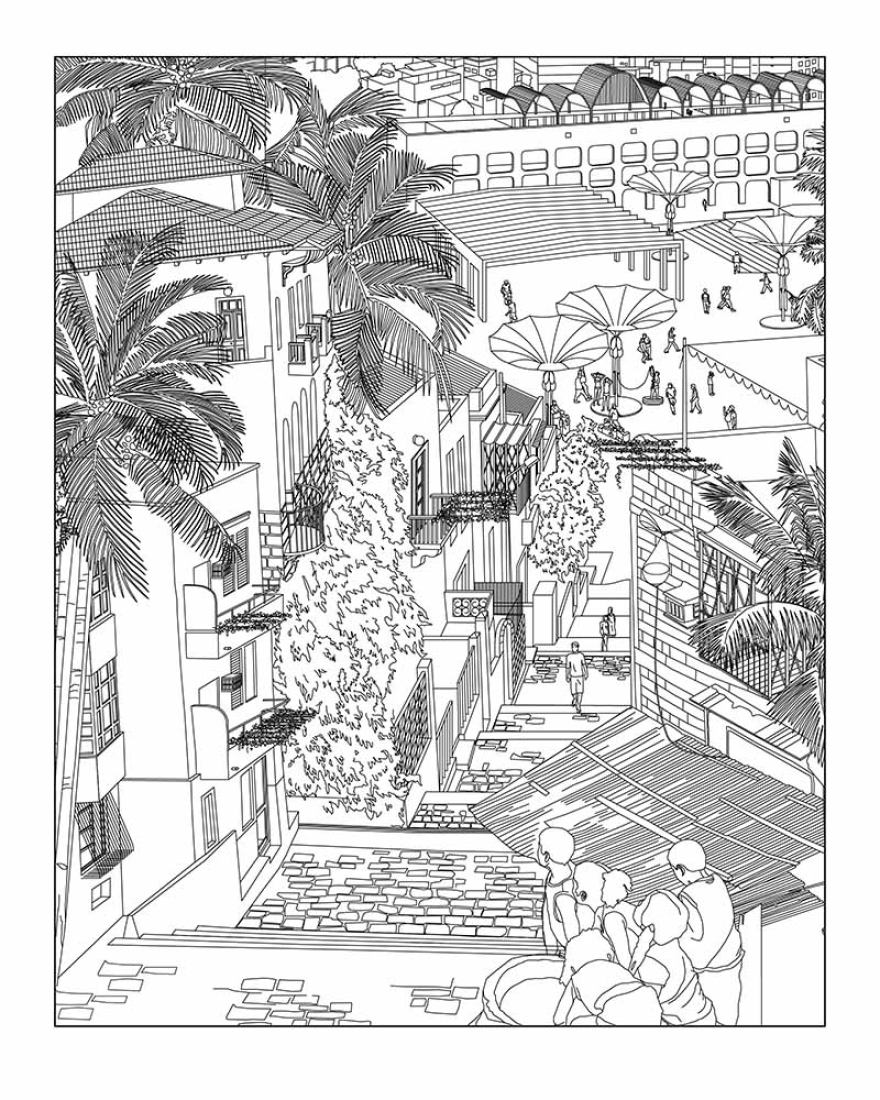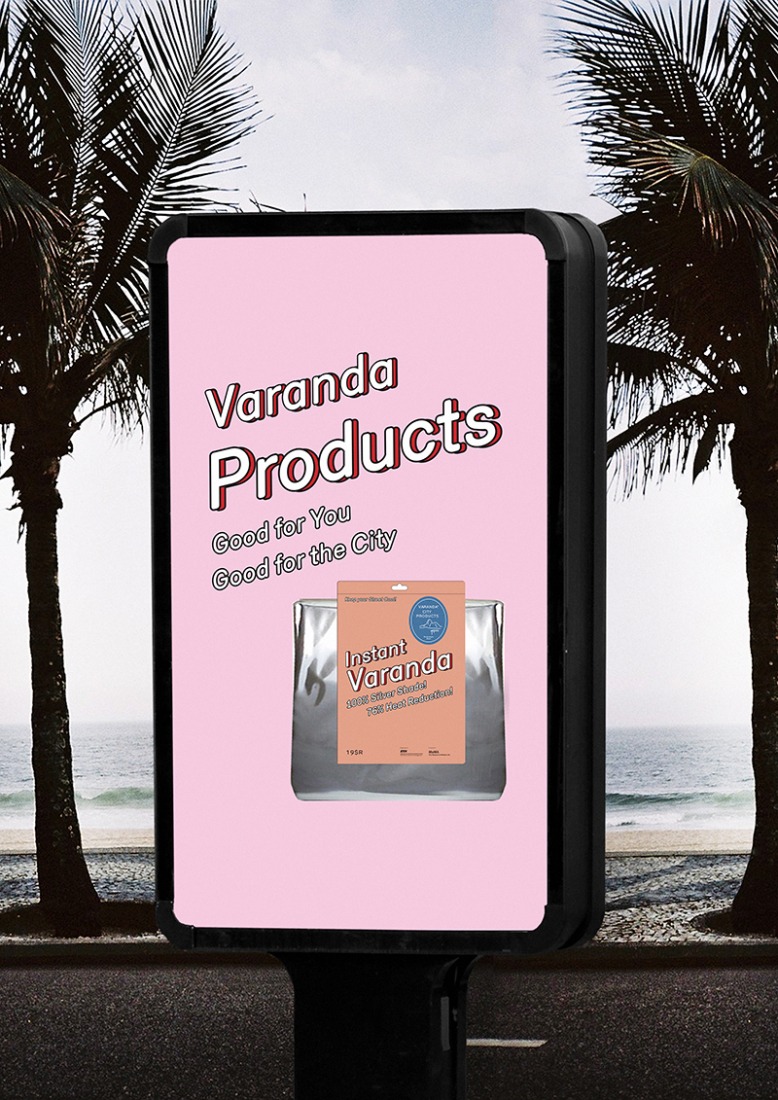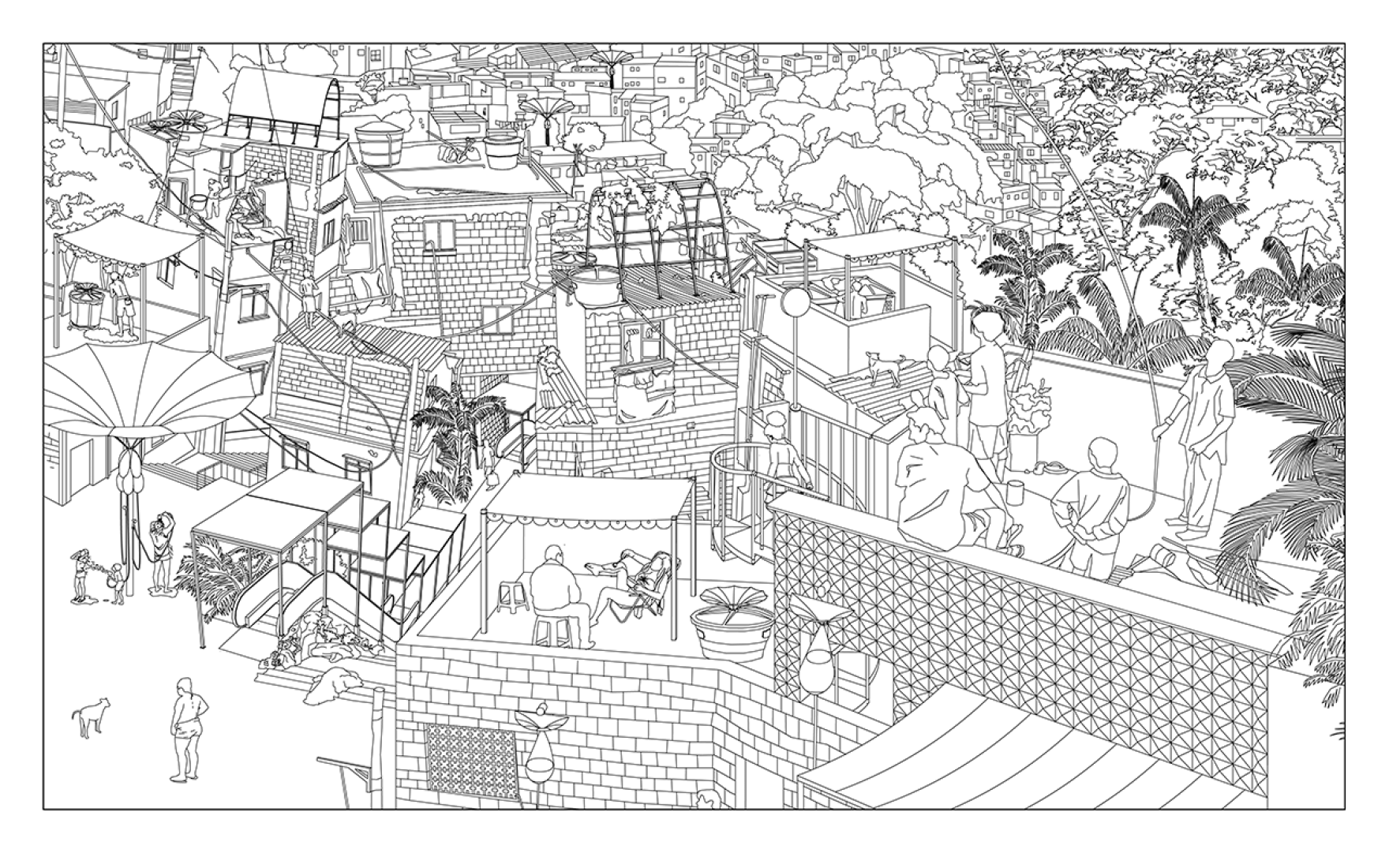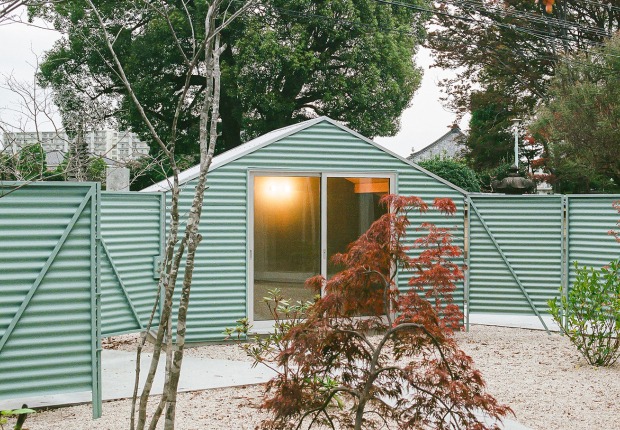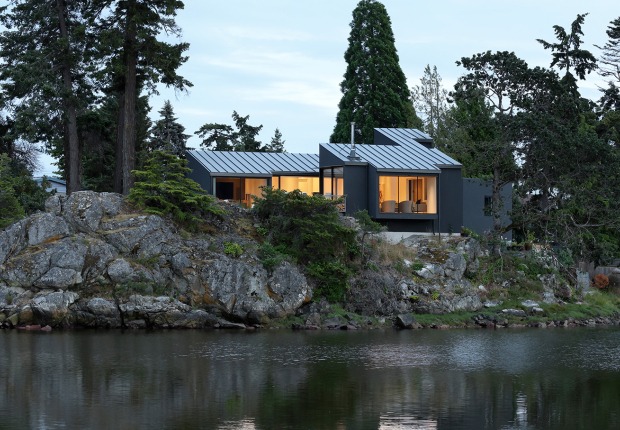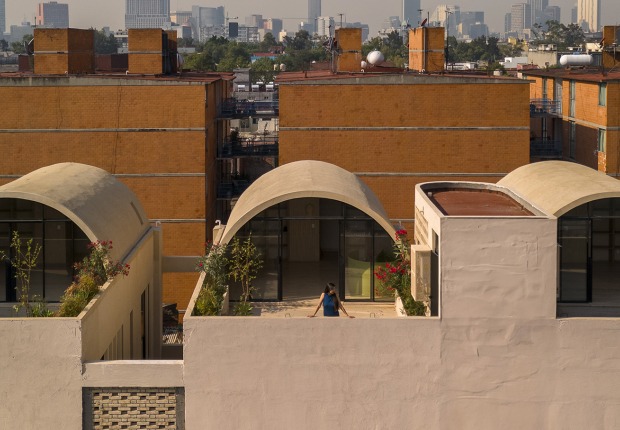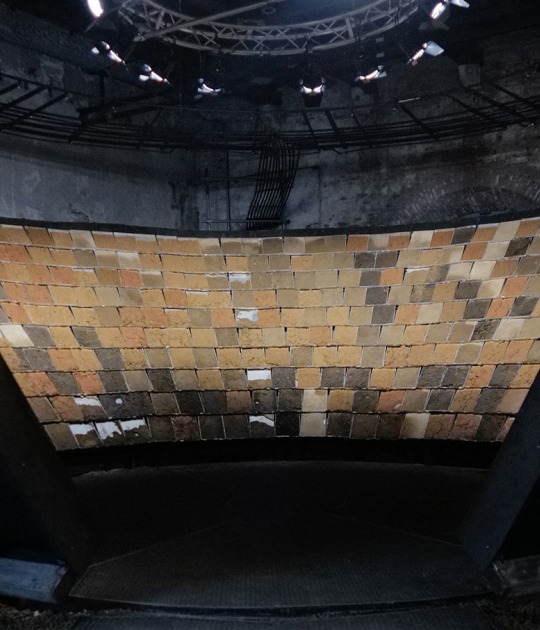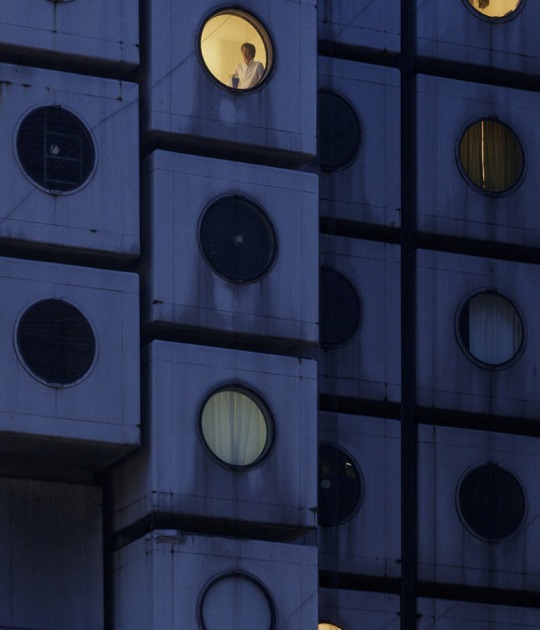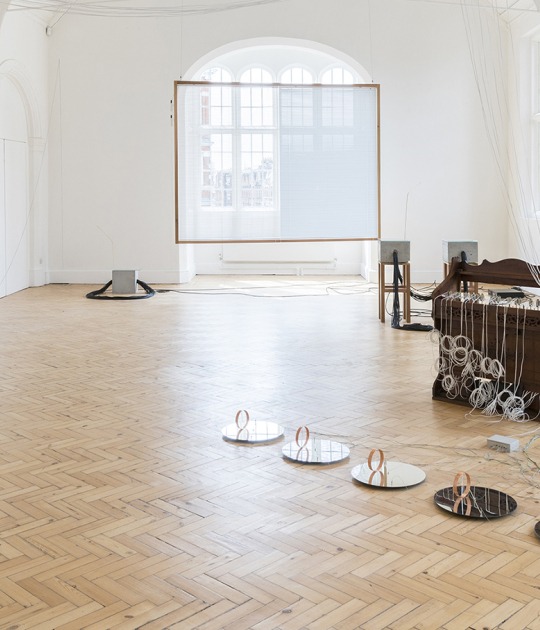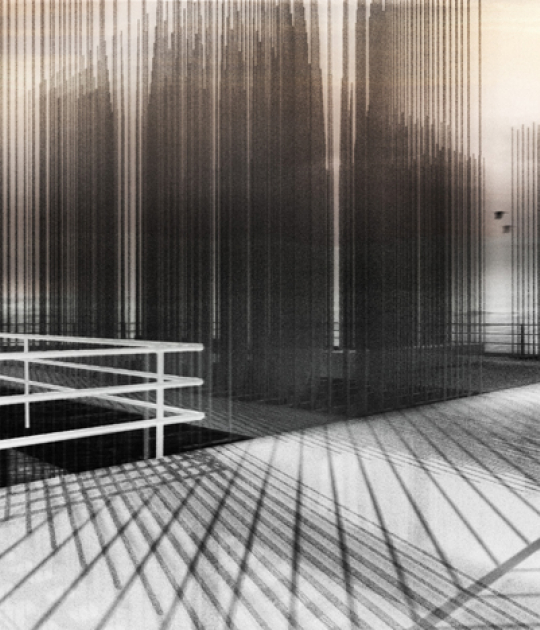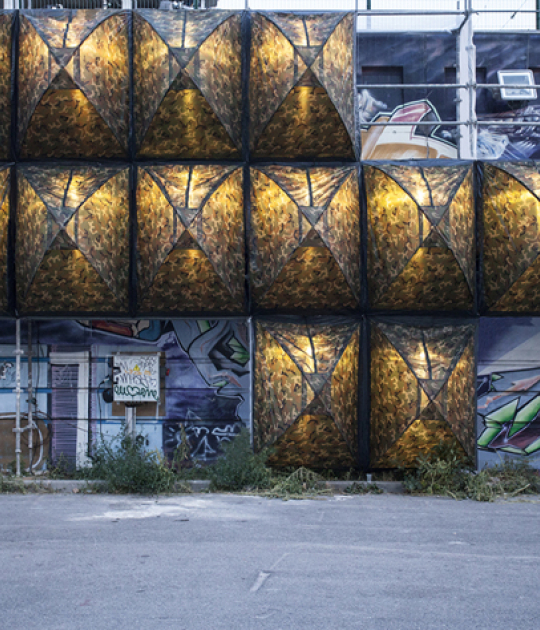In recent years, tactical modes of urbanism have arisen in the form of everyday, bottom-up approaches to local problems as a counterpart to a classic notion of top-down planning. Uneven Growth asks how current practices of architecture and urban design can learn from such developments by presenting design scenarios based on this type of urbanism, while also mapping emergent modes of tactical urbanism around the globe. The exhibition features design visions comprised of drawings, renderings, animations, and videos produced by six interdisciplinary teams of local practitioners and international architecture and urbanism experts, each focusing on a specific city. Uneven Growth is organized by Pedro Gadanho, Curator, Department of Architecture and Design, in collaboration with the Austrian Museum of Applied Arts (MAK), Vienna.
Tactical urbanism is a highly pragmatic movement that applies to a spectrum of designers, from those who perform guerilla interventions of short-term change to those who seek to prod, provoke, or stimulate the political process toward incremental realization of fragments of what might be larger networks. To further explor e these ideas, the Museum has published a book and created a user - generated Tumblr blog that collects examples of emerging modes of tactical urbanism happening in the six cities.
Mr. Gadanho states: “The exhibition features design scenarios for future developments that simultaneously raise awareness of the prevailing inequalities in specific urban areas and confront the changing roles of architects vis-à-vis ever - increasing urbanization. Each team in the exhibition was asked to consider how emergent forms of tactical urbanism can respond to alterations in the nature of public space, housing, mobility, spatial justice, environmental conditions, and other major issues in near-future urban contexts.”
For the workshop phase of Uneven Growth , six interdisciplinary teams of international architecture and urbanism practitioners and experts studied megacities in diverse world regions. The choice of these urban conglomerations was determined by the way in which they display different degrees, stages, and conditions of urban inequality. Because of the scope of problems presented by each of these specific urban conditions, each team included participants who have an intimate knowledge of local circumstances and are embedded in their object of study. Experts in urban studies at an international level where brought in to provide a collaborative, transgeographical design chemistry that could respond adequately to the complexities of the themes. Following an initial workshop at MoMA PS1 and subsequent workshops at The Value Factory in Shenzhen, China , and at MAK in Vienna, the collaborating teams produced responses to the theme and developed new projects under the curatorial and critical guidance of MoMA’s Department of Architecture and Design and an advisory board that includes Saskia Sassen, David Harvey, Ricky Burdett, Neil Brenner, Nader Tehrani , Michael Sorkin, Marc Angélil, and Teddy Cruz.
Uneven Growth confronts the global threats of accelerated income discrepancy and a polarization of wealth and poverty that are manifesting in various ways due to rapid urbanization . The exhibition is a laboratory experiment devoted not only to bettering life in the expanding city, but also to defining an effective, activist role for architects in the wake of two generations of disinvestment in public projects from housing to urban in frastructure. The design scenarios presented in Uneven Growth counteract the dystopian outcomes that can be expected of the progression of current urban trends, both in terms of spatial segregation and of socioeconomic inequality. Even if offering only acupunctural outlooks on how to change for the better, they present visions that are intended to advance public discussion and suggest models to be applied to diverse urban contexts.
Uneven Growth is the third in a series of exhibitions at MoMA called Issues in Contemporary Architecture , which focuses on timely topics in contemporary architecture , with an emphasis on the urban dimension , in order to increase public dialogue about critical issues in architecture. The series was launched in 2009 with Rising Currents : Projects for New York's Waterfront , a major initiative that brought together teams of architects, engineers, and landscape designers to instigate a debate on New York City’s relationship to sea level rise and to provide ideas and images that might help activate debate for the millions of people worldwide living in floodable zones. In 2011, Foreclosed: Rehousing the American Dream used the same approach to address the challenges of the urban fringe of five American cities that were hard hit by the subprime mortgage crisis and the tsunami of foreclosures that came in its wake.
When.- November 22, 2014–May 10, 2015.
Where.- Architecture and Design Galleries, third floor. MoMA. 11 W 53rd St, New York, NY 10019, U.S.

Hong Kong
MAP Office, Hong Kong, China.
MAP OFFICE + Network Architecture Lab.
Compressed between sea and mountains, Hong Kong is a chaotic, hybrid, and colorful urban territory characterized by its extreme density and geography. Formed by a collection of more than 250 islands, mostly inhabited, the city/territory is under pressure from Beijing to absorb new waves of mainland migrants in order to accommodate a 50 percent population increase to its 7.2 million inhabitants. The threat of exponential population growth in combination with scare land resources and rising sea levels suggest an opportunity to test an artificial island scheme that could extend to the Pearl River Delta and further along the Chinese coastline.
Man-made islands offer an alternative, sustainable urban expansion with new modes of living, working, and entertaining. Paradigms of living conditions, islands exaggerate existing modes of production and consumption of urban spaces. As territorial fragments, their construction and destruction concentrates many of the forces of human civilization and offers a way to escape the present and to project the future.
Hong Kong Is Land proposes to add eight new artificial islands to the existing territory. In this way, it addresses various needs and features of prevailing contexts while taking into account near future situations. These artificial lands should not be recognized solely as islands or generators of maritime zones. Beyond offering a response to an unbalanced geography, the eight corresponding scenarios propose a new language through which to promote universal values and raise global awareness of specific contemporary issues. Myths, legends, fictions, stories, histories—as many narratives as possible are required to define the contours of a new territory.

Istanbul
Superpool, Istanbul, Turkey.
Atelier d’Architecture Autogérée + SUPERPOOL.
Turkey is currently one of the fastest-growing economies in Europe. At 14 million inhabitants and a yearly growth rate of 3.5 percent, Istanbul has fully benefited from this economic boom. Starting in the 1960s, its rapid urbanization has had three main phases: gecekondus squatter villages; post-gecekondus’ additional building rights; and mass housing since the 1990s. Unlike earlier “self-building” phases, the recent mass housing is organized predominantly through the Housing Development Agency of Turkey, Toplu Konut İdaresi Başkanlığı (TOKI), and it employs a single urban typology: gated complexes of repetitive tower clusters on open land.
TOKI development parallels the emergence of a new middle class in Istanbul for whom a TOKI flat is part of a dream of car and house ownership, even if this brings social isolation, long hours in traffic, and long-term debt. This deeply indebted middle class is also prone to be the most vulnerable during periods of recession. In the face of continuing political, economic, and ecological uncertainties, and the rising costs of energy, TOKI inhabitants have to become more resilient.
Kolektif İşbirlikçi Toplum Oluşumu (KITO) is a proposal for a post-urban development agency that uses open-source, citizen-driven R-Urban regeneration to transform TOKI complexes. KITO works at different scales and levels of resilient action to retrofit spaces, equipment, services, and institutions. KITO’s collective interaction is facilitated via KITO’da, an online network that creates an alternative economy, assigning value to local actions and empowering people to make, give, share, and save energy, services, goods, knowledge, and skills. Instead of consuming the city, residents share in its production.

Lagos
NLÉ, Lagos, Nigeria and Amsterdam, Netherlands.
NLÉ + Zoohaus/Inteligencias Colectivas, Madrid, Spain.
Nigeria, Africa’s largest economy and most populous country, is inhabited by over 170 million people. Lagos, its commercial capital, is home to about 20 million people, many of whom live in unplanned settlements with little formal infrastructure. Lagos is a paradigmatic mix of traditions, a place where history, culture, and popular wisdom interweave local knowledge and global awareness.
Challenges remain common for all Lagosians, regardless of social or economic status. While oil is cheap, the state energy network is only reliable for three hours per day. Most homes and businesses depend on generators for electricity. Nearly 30 percent of Lagos state is covered by water, yet water is highly underutilized and inadequately handled by the city’s infrastructure. A poorly connected public transportation system boosts SUV use among middle and upper classes, while mini-transport vehicles like okadas (motorcyles) or danfos (vans) proliferate among lower-income Lagosians. Urban growth is so rapid that strategies devised by authorities and city planners become obsolete before implementation. Most citizens have to set up their own businesses, often in semi-illegal conditions.
To bridge physical and socioeconomic gaps, we examine three challenges—energy supply, water supply, and transportation—and rethink them as opportunities through infrastructures, prototypes, and local collective intelligence. We propose two representational tools: a map that echoes Lagos’s complex reality, and a catalogue of local inventions, situations, and players. Using these two tools, we propose prototypes to enrich the city fabric and three depictions of a future reality in which the day-to-day skills of “informal” bottom-up initiatives merge with “formal” top-down plans.

Mumbai
URBZ : user - generated cities , Mumbai, India.
Ensamble Studio/MIT - POPlab, Madrid, Spain and Cambridge , U.S.
Mumbai is a city of disparate habitats that emerged through various historical encounters to form a global, but non-standardized, metropolis. Often represented in bipolar terms as a city of slums and high-rises, contemporary Mumbai’s diversity of built-forms represents the creative ways inhabitants occupy urban space. Within the complex city fabric, informal settlements have grown incrementally, and now absorb over half of the metropolis’s 12 million residents, most typically in thousands of tiny “tool-houses” squeezed into a disproportionately small share of the city’s land.
Serving as both a residence and workspace, Mumbai’s tool-house echoes a housing type common across Asia, from Singapore’s shop-house to Tokyo’s home-factory, and generates its value through use rather than from land speculation. It represents a lifeline that keeps millions of people afloat and allows them to productively occupy the city. In the name of redevelopment, however, these neighborhoods are being replaced by single-function high-rises, revealing the arrested imagination of the authorities.
Instead of a planet of slums in need of clearance, we see neighborhoods in different stages of evolution. The in-situ work of URBZ and Ensamble Studio/MIT-POPlab's innovative research respond to this vision with a collage of tactics, technologies, and imaginations. The air is proposed as new territory where live-work conditions and public infrastructures recover their rightful place, liberating the excessive pressure on the land. Rather than a tabula rasa, homegrown neighborhoods are seen as a “tabula pronta,” with real value to drive development strategies. This is not a speculative future, but an expanded present where inhabitants can reclaim growth for themselves.

New York
SITU Studio, New York, U.S.
Cohabitation Strategies (CohStra), Rotterdam, Netherlands AND New York, U.S.
Over the past two decades, global investment and profit-driven development, as well as housing policies at all government levels, have engineered New York’s social divide. With middle-income households in decline, the city’s rapid growth manifests in transformed neighborhoods, luxury developments, and a marked scarcity of affordable housing. Deregulation of private rental housing, withdrawal of funds for rental subsidies, disinvestment in housing provisions for the poor, wage stagnation, and high rents—causing more than half of all renter households to be rent burdened—have created a crisis of affordability.
A lesser-known consequence of the affordability crisis is an informal rental market that has illegally adapted, subdivided, and converted existing apartment buildings, town houses, and high-rises to accommodate the lowest-paid populations. More than a century ago, in what we like to believe was a different New York, Jacob Riis identified this same injustice: poor citizens, made invisible within existing housing stock, are left out of the policies and design decisions that shape their homes.
Two alternative approaches address New York’s housing crisis: Cohabitation Strategies proposes Housing Cooperative Trusts that challenge traditional conceptions of property. Land and buildings are owned collectively by city authorities, non-profits, community stakeholders, and tenants to guarantee permanent affordable housing while building social equity for future generations. SITU Studio proposes neighborhood-based Community Growth Corporations to open up underutilized spaces to incremental growth. Outer-borough neighborhoods collectively finance community-wide improvements that provide access to rooftops, backyards, and other occupiable spaces, facilitating a new informal rooftop urbanism for a city with scarce remaining land.

Rio de Janeiro
RUA Arquitetos, Rio de Jaeniro, Brazil.
RUA ARQUITETOS + MAS Urban Design, ETH Zurich, Switzerland.
Unevenness is a dominant feature of Rio de Janeiro’s urban landscape, making it exemplary of Brazil’s reputation as an unequal country. Extreme topography confronts the city with nature and the division between rich and poor is articulated in asfalto (official city) and morro (favelas). Yet, Brazil’s income distribution has drastically changed during the last seven years—the lower middle class has increased by 40 million people and now represents the largest segment of the population. In Rio, 60 percent of favela residents now belong to this emerging middle class.
As Rio becomes a middle-class city, the government and prevailing economic system are transforming the city into a setting for market-driven development. However, the discontent of large portions of the population—demonstrated by recent protests against the FIFA World Cup and the 2016 Olympics—expresses the gap between the aspirations of an emerging consumer class and the lack of urban equality.
The cariocas (Rio’s inhabitants) have always found ways to appropriate and subvert their built environment through puxadinhos-—add-ons to existing structures made from leftover materials. Inspired by puxadinhos, the proposed Varanda Products accommodate the logic of the market in order to transform it. As an interface between individual and community, the varanda offers a middle ground for negotiation, gathering, and play. Varanda Products is a catalogue of everyday consumer products that promotes city-making as a collective endeavor bringing together diverse social milieus. Insinuating itself everywhere, Varanda Products encourages small-scale urban entrepreneurship with the openness and playfulness typical of the carioca way of life.
This is the third exhibition in the series Issues in Contemporary A rchitecture, supported by Andre Singer.
The exhibition and accompanying workshop at MoMA PS1 were made possible by MoMA’s Wallis Annenberg Fund for Innovation in Contemporary Art through the Annenberg Foundation.
